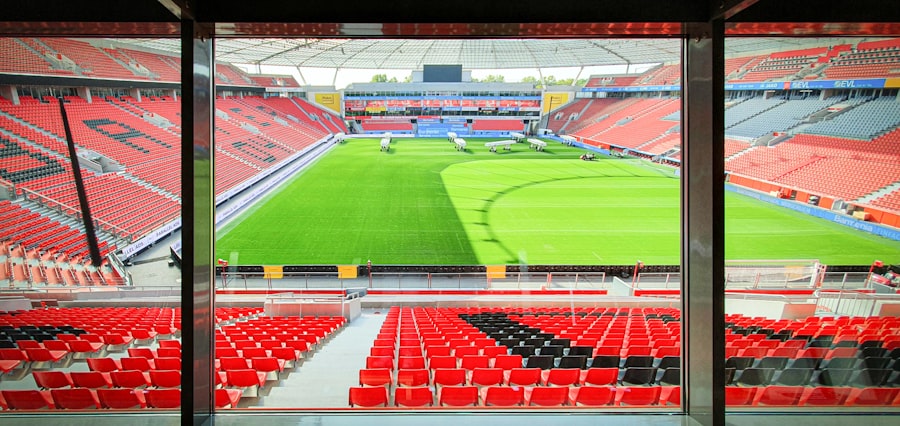Download links
How to install Mastering Football with ph360 Online APK?
1. Tap the downloaded Mastering Football with ph360 Online APK file.
2. Touch install.
3. Follow the steps on the screen.
Description
Every individual possesses a distinct physiological makeup that influences how they respond to exercise, nutrition, and recovery. Understanding your body’s unique needs is the cornerstone of any effective training regimen. Factors such as age, gender, body composition, metabolic rate, and even genetic predispositions play a significant role in determining how your body reacts to various stimuli.
For instance, younger athletes may recover more quickly from intense workouts compared to older individuals, who might require longer recovery periods. Similarly, men and women often exhibit different responses to strength training due to hormonal differences, which can affect muscle growth and fat loss. Moreover, individual health conditions can also dictate specific needs.
For example, someone with a history of joint issues may need to approach high-impact exercises with caution, opting instead for low-impact alternatives that still provide cardiovascular benefits without undue stress on the joints. Additionally, understanding your body’s signals—such as fatigue, soreness, and energy levels—can help you tailor your training and recovery strategies effectively. Listening to these signals is crucial; ignoring them can lead to overtraining or injury, which can set back progress significantly.
Therefore, a comprehensive understanding of your body’s unique needs is essential for creating a sustainable and effective fitness journey.
Key Takeaways
- Understanding your body’s unique needs is crucial for designing an effective training program.
- Tailoring your training program to your specific goals, abilities, and limitations is essential for success.
- Optimizing nutrition for performance involves fueling your body with the right nutrients at the right times.
- Injury prevention and recovery strategies are important for maintaining peak performance and long-term health.
- Mental conditioning is a key component of peak performance and can be improved through various techniques such as visualization and mindfulness.
- Tracking progress and adjusting strategies based on results is necessary for continual improvement and success.
Tailoring Your Training Program
Exercise Selection and Program Structure
Once you have a clear understanding of your body’s unique needs, the next step is to tailor your training program accordingly. This involves not only selecting the right types of exercises but also determining the appropriate intensity, volume, and frequency of workouts. For instance, if you are a beginner, starting with a program that emphasizes foundational movements—such as squats, push-ups, and lunges—can help build strength and stability before progressing to more complex exercises.
Periodization: A Critical Component of Training
Conversely, an experienced athlete may benefit from a program that incorporates advanced techniques like plyometrics or Olympic lifts to enhance power and explosiveness. In addition to exercise selection, periodization is a critical component of tailoring your training program. This involves structuring your training into cycles that focus on different goals—such as strength building, hypertrophy, or endurance—over specific time frames.
Benefits of Periodization
For example, an athlete might spend several weeks focusing on building strength through heavy lifting before transitioning to a phase that emphasizes higher repetitions for muscle endurance. This strategic approach not only helps prevent plateaus but also reduces the risk of overuse injuries by varying the demands placed on the body.
Optimizing Nutrition for Performance

Nutrition plays a pivotal role in optimizing performance and recovery in any training program. The right dietary choices can enhance energy levels, improve endurance, and facilitate muscle repair. A well-balanced diet rich in macronutrients—carbohydrates, proteins, and fats—is essential for fueling workouts and supporting overall health.
Carbohydrates serve as the primary energy source during high-intensity exercise; thus, athletes should prioritize complex carbohydrates like whole grains, fruits, and vegetables to maintain glycogen stores. For instance, consuming a meal rich in carbohydrates before a workout can provide the necessary energy for optimal performance. Protein intake is equally important for muscle repair and growth.
Athletes should aim to consume adequate protein throughout the day, particularly after workouts when the muscles are primed for recovery. Sources such as lean meats, dairy products, legumes, and plant-based proteins can help meet these needs. Additionally, healthy fats should not be overlooked; they play a crucial role in hormone production and overall cellular function.
Incorporating sources like avocados, nuts, seeds, and fatty fish can provide essential fatty acids that support long-term health and performance.
Injury Prevention and Recovery
| Metrics | Data |
|---|---|
| Number of reported injuries | 150 |
| Recovery time (in days) | 10 |
| Percentage of injuries preventable | 80% |
Injury prevention is a critical aspect of any training program that is often overlooked until it’s too late. Understanding the common injuries associated with specific sports or activities can help athletes take proactive measures to avoid them.
Implementing strategies such as proper warm-up routines, strength training for supporting muscles, and flexibility exercises can significantly reduce the risk of injury. Recovery is equally important in maintaining long-term athletic performance. The body requires time to repair itself after strenuous workouts; neglecting recovery can lead to chronic fatigue and increased injury risk.
Techniques such as active recovery—engaging in low-intensity activities on rest days—can promote blood flow and aid in muscle repair. Additionally, practices like foam rolling or massage therapy can alleviate muscle tightness and improve flexibility. Sleep also plays a vital role in recovery; ensuring adequate rest allows the body to heal and adapt to training stresses effectively.
Mental Conditioning for Peak Performance
Mental conditioning is often the unsung hero of athletic performance. The psychological aspect of training can significantly influence an athlete’s ability to perform under pressure. Techniques such as visualization can help athletes mentally rehearse their performance, enhancing confidence and focus during competition.
For instance, many elite athletes use visualization techniques before events to imagine themselves executing their skills flawlessly, which can translate into improved performance on the field or court. Additionally, developing mental resilience is crucial for overcoming challenges and setbacks in training or competition. Strategies such as mindfulness meditation can help athletes stay present and focused during high-pressure situations.
By cultivating a positive mindset and learning to manage stress effectively, athletes can enhance their overall performance. Furthermore, setting specific goals—both short-term and long-term—can provide motivation and direction in training efforts. This goal-oriented approach fosters a sense of purpose and commitment that is essential for achieving peak performance.
Tracking Progress and Adjusting Strategies

Identifying Trends and Making Informed Decisions
By keeping detailed records of workouts and performance outcomes, athletes can identify trends in their progress and make informed decisions about future training adjustments. This allows them to refine their strategies and optimize their performance.
Adjusting Strategies for Continued Improvement
Adjusting strategies based on tracked data is essential for continued improvement. If an athlete notices a plateau in performance or an increase in fatigue levels, it may be time to reassess their training volume or intensity.
Optimizing Training Strategies for Sustained Success
Regular assessments, such as fitness tests or performance evaluations, can provide valuable insights into areas needing improvement. By remaining flexible and responsive to their body’s feedback and performance data, athletes can optimize their training strategies for sustained success over time.
If you enjoy playing ph360 Online Football, you may also be interested in checking out the article on Plants vs. Zombies 2. This popular game offers a fun and challenging experience for players of all ages. You can read more about it here.
FAQs
What is ph360 Online Football?
ph360 Online Football is a virtual football game that allows players to create and manage their own football team, compete in matches, and participate in leagues and tournaments.
How does ph360 Online Football work?
Players can sign up for an account, create their own football team, and manage their team by making strategic decisions such as player selection, tactics, and formations. They can then compete against other players’ teams in matches and climb the rankings.
What features does ph360 Online Football offer?
ph360 Online Football offers features such as team management, player scouting and recruitment, match simulation, league and tournament participation, and social interaction with other players.
Is ph360 Online Football free to play?
ph360 Online Football offers a free-to-play model with optional in-game purchases for virtual items and enhancements.
Can I play ph360 Online Football on mobile devices?
Yes, ph360 Online Football is available for play on mobile devices through its mobile app, allowing players to manage their teams and participate in matches on the go.





